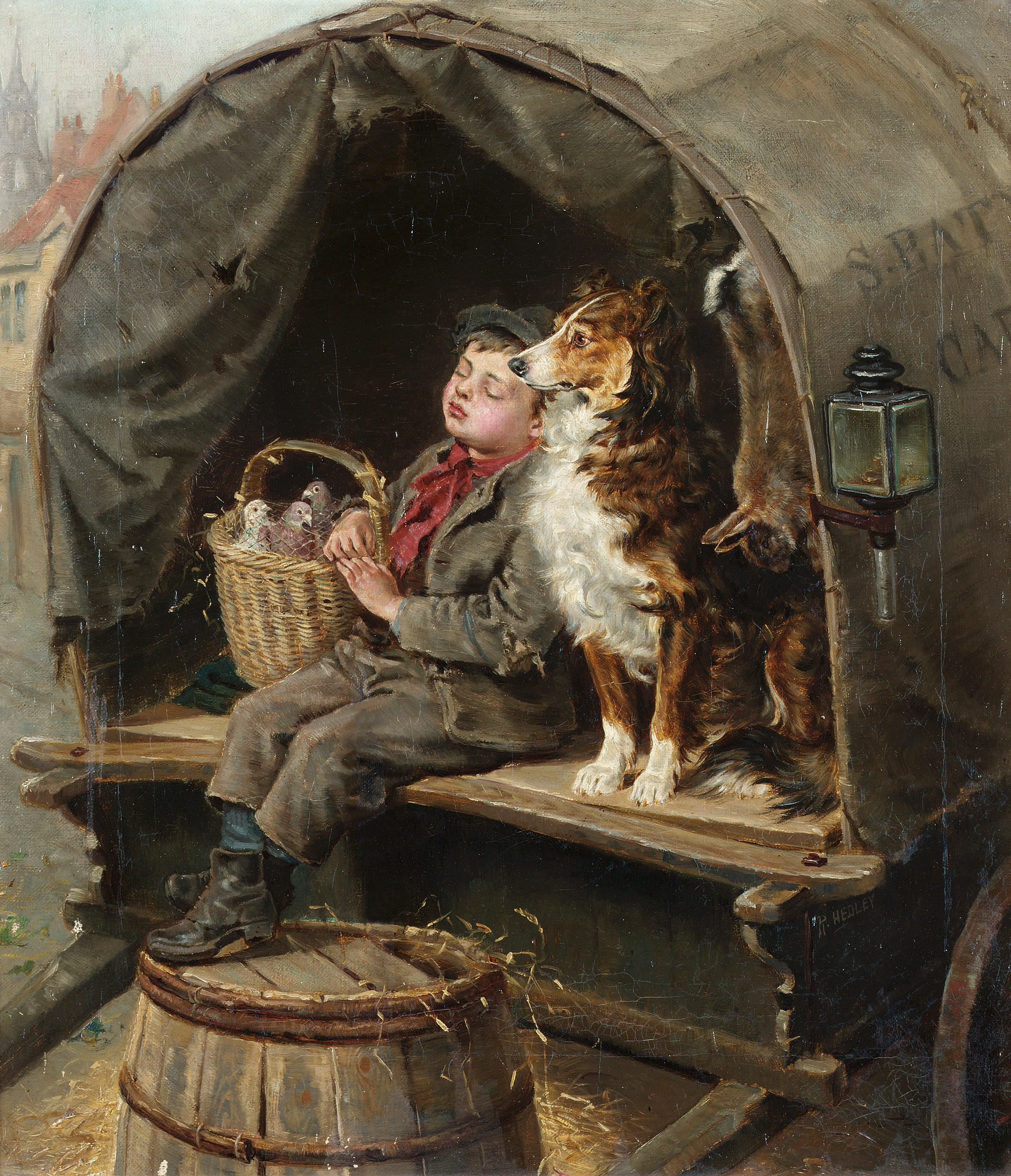Home » Tutti i post

Walt Whitman | The voice of the rain / La voce della pioggia
And who art thou?
Said I to the soft-falling shower,
Which, strange to tell, gave me an answer, as here translated:
I am the Poem of Earth, said the voice of the rain,
Eternal I rise impalpable out of the land and the bottomless sea,
Upward to heaven, whence, vaguely form'd, altogether changed, and
yet the same,
 |
| Claude Monet | The Rain (La pluie), 1886-1887 |

Ralph Hedley (1851-1913) | Pittore di genere
Ralph Hedley è stato un pittore, intagliatore ed illustratore realista, noto soprattutto per i suoi dipinti che ritraggono scene di vita quotidiana nel nord-est dell'Inghilterra.
Biografia
Nato a Gilling West vicino a Richmond, nel North Yorkshire, Ralph ei suoi genitori Richard e Anne Hedley si trasferirono a Newcastle upon Tyne intorno al 1850, sull'onda delle opportunità industriali.
All'età di circa 13 anni, fu apprendista di Thomas Tweedy nei suoi laboratori di intaglio, studiando contemporaneamente arte e design alla "Government school" di Newcastle, e frequentando corsi serali alla Life School sotto William Bell Scott.
All'età di 14 anni è stato insignito di una medaglia di bronzo dal Dipartimento di Arte e Scienza del governo.

Charles Courtney Curran | Lady with a Bouquet (Snowballs) 1890
The genre painter Charles Courtney Curran is best known for his canvases depicting beautiful ladies in pleasant settings.
Here, a young woman–the artist’s wife Grace Wickham Curran - arranges a bouquet of snowballs, pausing to take in their sweet fragrance.
The small scale of the painting matches the intimacy of the moment.
Her delicate features, light green shawl and blossom-like hat equate her to a flower, suggesting that she is as lovely and dainty as the blooms she savors. Curran’s choice of flower is likely a deliberate one.
At the time this work was painted, bouquets were used to convey messages, with each flower having a specific symbolic meaning.
According to the Victorian "language of flowers", the snowball symbolized thoughts of heaven, adding an air of Christian piety to this work. | © Birmingham Museum of Art
 |
| Charles Courtney Curran | Lady with a Bouquet, 1890 | Birmingham Museum of Art |

Jorge Luis Borges | Con che cosa ti posso trattenere? / What can I hold you with?
Con cosa posso trattenerti?
Ti offro strade difficili, tramonti disperati,
la luna di squallide periferie.
Ti offro le amarezze di un uomo
che ha guardato a lungo la triste luna.
Ti offro i miei antenati, i miei morti,
i fantasmi a cui i viventi hanno reso onore col marmo:
il padre di mio padre ucciso sulla frontiera di Buenos Aires,
due pallottole attraverso i suoi polmoni, barbuto e morto,
 |
| Jules-Alexis Muenier (1863-1942) | Hamnen vid Villefranche Nizza, 1894 | Finnish National Gallery |

Jorge Luis Borges | Learning / Imparerai / Aprenderas
After some time, you learn the subtle difference between
holding a hand
and imprisoning a soul;
You learn that love does not equal sex,
and that company does not equal security,
and you start to learn….
That kisses are not contracts and gifts are not promises,
and you start to accept defeat with the head up high
and open eyes,
 |
| Albrecht Dürer | Study of hands, 1506 |

Maria Catharina Wiik
Maria Wiik (Helsinki, 1853-1928) è stata una eccellente ritrattista Finlandese, che si distinse anche nei paesaggi e nelle nature morte.
Maria Catharina Wiik nacque a Helsinki in una famiglia colta e benestante. Suo padre, Jean Wiik, era architetto. Notato il suo precoce talento per il disegno, i genitori la incoraggiarono ad intraprendere la via dell'arte.
Maria quindi iniziò a studiare nel 1874, all'età di 21 anni, presso la scuola di disegno dell'"Accademia di belle arti di Helsinki" e, al tempo stesso, seguì dei corsi privati, sia con Adolf von Becker, sia presso lo studio di Severin Falkman.
Iscriviti a:
Post (Atom)




